How Pallet Inverters Offer Cost-Effective Solutions for High-Volume FMCG Plants in India
In the fast-moving consumer goods (FMCG) sector, every second and every rupee counts. I’ve spent my entire career in the packaging industry, first as an engineer and now as the founder of SHJLPACK. I’ve seen firsthand how a small bottleneck can cascade into significant losses. For high-volume plants in India, the pressure is immense. You might have a pallet loaded with perfectly good products, but the pallet itself is damaged, or you need to transfer the goods to a different type of pallet for shipping. This often means stopping the line and assigning workers to manually unstack and restack everything. This process is not only slow and expensive but also a major source of product damage and potential worker injuries.
A pallet inverter is a cost-effective solution for high-volume FMCG plants in India because it automates the process of transferring loads from one pallet to another. This single piece of equipment drastically reduces manual labor costs, minimizes product damage that occurs during manual handling, increases throughput speed at the end of the production line, and improves workplace safety. By turning a slow, risky, and expensive manual task into a fast, safe, and efficient mechanical process, a pallet inverter delivers a rapid return on investment and solves a critical bottleneck in the logistics chain.
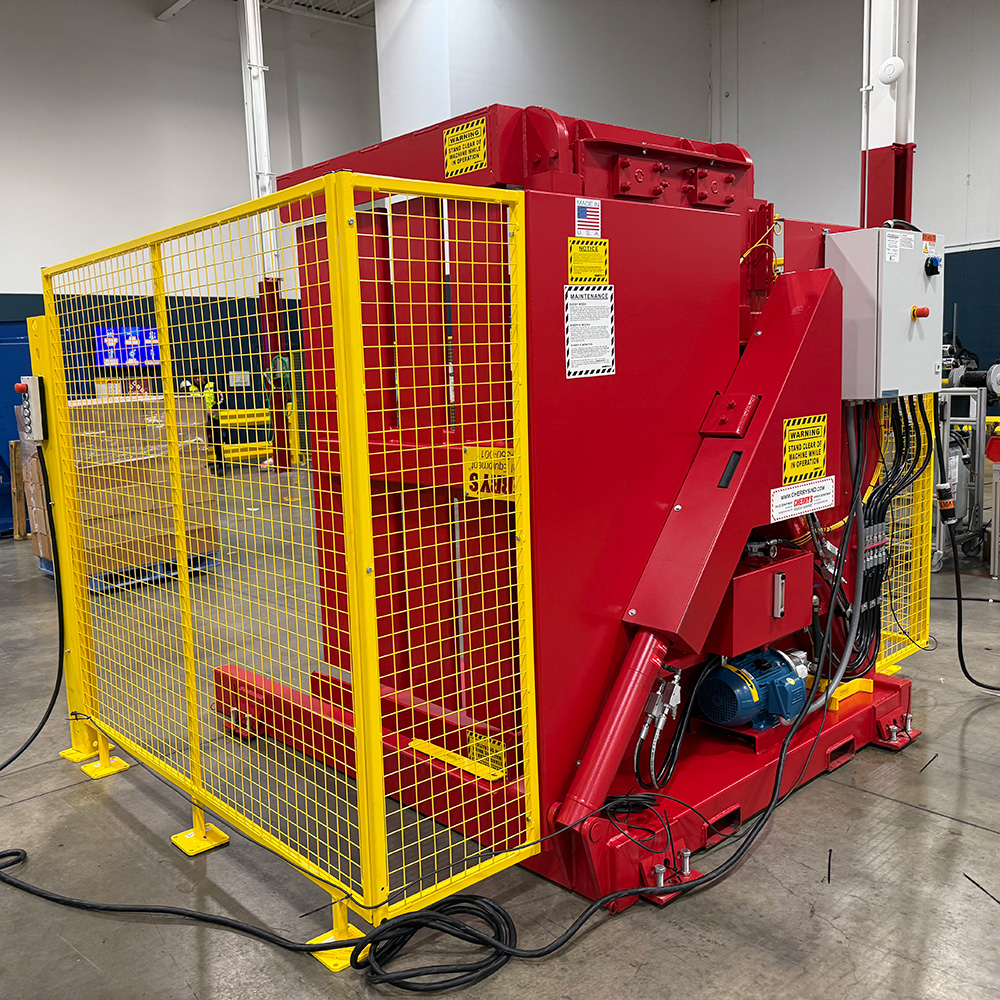
I built my business, SHJLPACK, on the principle of providing total solutions. It’s not just about selling a machine; it's about understanding the core problem and offering a solution that genuinely improves your operation. The pallet inverter is a perfect example of this philosophy. It looks simple, but its impact on your bottom line can be huge. Let's dive deeper into how this machine can specifically benefit a fast-paced FMCG environment in India.
How can a pallet inverter directly reduce operational costs?
Your operational budget is constantly under pressure. Labor costs, while competitive in India, add up significantly when tasks are inefficient. You might have two or three workers assigned to the loading bay just for handling pallet issues. They spend hours manually transferring heavy boxes from a broken wooden pallet to a new one. This isn't just about their wages. You have to consider the hidden costs: the risk of back injuries, the slow pace that creates a backlog, and the inevitable product damage from dropped or crushed boxes. These small, recurring costs eat away at your profit margins every single day.
A pallet inverter directly attacks these operational costs at their source. It reduces the need for manual labor for pallet exchange and product recovery, which immediately lowers your wage expenses. It protects your products by using a gentle, controlled clamping and rotating motion, cutting down on losses from damage. It also significantly lowers the financial risk associated with workplace injuries and compensation claims. By automating this single task, you free up your valuable workforce to focus on more productive activities instead of manual, repetitive lifting.
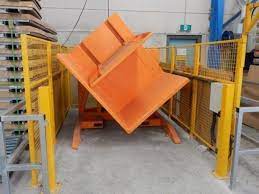
Breaking Down the Cost Savings
Let’s get into the specifics. The value proposition of a pallet inverter is not an abstract concept; it is something you can measure and quantify on your balance sheet. The cost reductions come from three primary areas: labor, product preservation, and pallet management.
First, consider labor optimization. A manual pallet transfer is incredibly labor-intensive. It might take two workers 15 minutes to carefully de-stack and re-stack a full pallet. An operator with a pallet inverter can accomplish the same task in less than 60 seconds. This is not a minor improvement; it is a fundamental shift in efficiency. You are reallocating human capital from a low-value, high-risk task to roles that require skill and add more value to your production line. This reduction in manual handling also directly translates to fewer workplace injuries, which carry heavy direct and indirect costs.
Second, think about product damage prevention. Every time a box is handled manually, there's a risk. It can be dropped, crushed, or contaminated. In the FMCG sector, where packaging is often designed to be lightweight, this risk is even higher. A pallet inverter secures the entire load with adjustable pressure and then smoothly rotates it. This gentle process keeps every case secure and protected. Even a conservative 1% reduction in product damage can translate to tens of thousands of rupees saved each month in a high-volume facility.
Third, and this is a critical point for many Indian exporters, is pallet fleet management. You likely use high-quality, durable pallets within your facility for their longevity. However, for exporting goods or shipping to certain domestic clients, you need to use cheaper, one-way shipping pallets or specific plastic pallets to meet hygiene standards. A pallet inverter makes this exchange seamless. You can transfer your finished goods from your expensive in-house pallet onto a low-cost export pallet in seconds. This means your high-quality pallets stay within your facility, drastically reducing loss and the constant need for repurchase.
To visualize the impact, look at this direct comparison:
| Feature | Manual Pallet Transfer | Pallet Inverter Transfer |
|---|---|---|
| Labor Required | 2-3 Workers | 1 Operator |
| Time per Pallet | 15-20 minutes | < 60 seconds |
| Risk of Injury | High (lifting, bending) | Very Low (machine-operated) |
| Risk of Product Damage | Moderate to High | Extremely Low |
| Pallet Fleet Cost | High (if shipping with expensive pallets) | Optimized (use cheap export pallets) |
| Operational Consistency | Low (depends on worker fatigue) | High (consistent cycle time) |
The numbers clearly show that a pallet inverter is not just a piece of equipment; it's a cost-reduction strategy.
What are the key benefits for high-volume production lines in India?
Your production line is a finely tuned system. You have invested in high-speed fillers, cappers, and case packers. But if the end of your line, the final logistics stage, becomes a bottleneck, the efficiency of your entire factory is compromised. A stack of pallets waiting to be manually sorted or transferred can bring your entire operation to a standstill. In the competitive Indian FMCG market, this kind of inefficiency is a liability you cannot afford. Speed, safety, and flexibility are not just goals; they are requirements for survival and growth.
For high-volume production lines in India, the key benefits of a pallet inverter extend beyond simple cost savings. The primary advantage is a massive increase in throughput at the final packaging and shipping stage, ensuring your logistics can keep pace with production. It also directly improves worker safety, which reduces downtime from accidents and fosters a better working environment. Furthermore, it gives your operation the flexibility to instantly adapt to different pallet requirements for various customers or shipping regulations, making you a more agile and responsive supplier.
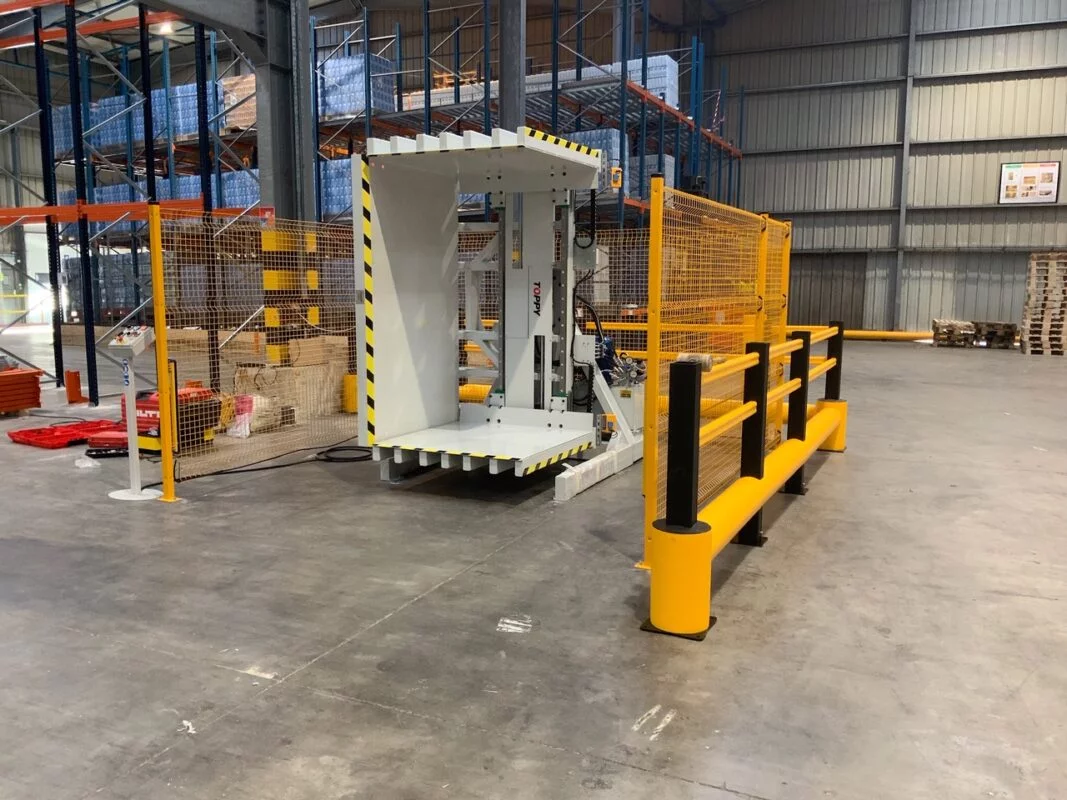
From Bottleneck to High-Speed Channel
In my experience, the most successful plants are those that optimize every link in their operational chain. A pallet inverter transforms your outbound logistics from a potential bottleneck into a high-speed, reliable channel.
First, let's talk about throughput and matching production speed. Modern FMCG production lines can output dozens of cases per minute, building up full pallets rapidly. A manual transfer process simply cannot keep up. The pallet inverter, with its sub-60-second cycle time, is designed for this environment. It ensures that finished goods flow smoothly from the production floor to the delivery truck without delay. I remember a client in the beverage industry in Pune. Their new bottling line was so fast that pallets were piling up in the dispatch area. Installing a simple pallet inverter to handle pallet swaps for export orders cleared this bottleneck completely and allowed them to realize the full potential of their production investment.
Second is the crucial aspect of enhancing worker safety and morale. The conversation around occupational health and safety in India is growing louder, and for good reason. Manually handling loads of 20kg or more, repeatedly, is a recipe for chronic back injuries and fatigue. A pallet inverter eliminates this hazardous manual task. This is not just about avoiding compensation claims. It shows your employees that you value their well-being. A safer workplace leads to higher morale, lower employee turnover, and a more focused and productive team.
Third, the flexibility and adaptability an inverter provides are invaluable. The Indian market is incredibly diverse. One day you might be shipping to a large, modern retail chain that demands standardized plastic pallets. The next day, an order might be for a local distributor who uses standard wooden pallets, or an export order that requires heat-treated pallets. Without an inverter, each changeover is a slow, manual process. With an inverter, you can switch pallet types on demand, for any order, without disrupting your workflow. This agility makes your business more competitive and responsive to customer needs.
Finally, there is an often-overlooked benefit: integrated quality control. When you need to check the bottom layers of a pallet for leaks or damage, what do you do? Manually unstack everything? A pallet inverter allows for quick and easy quality checks. You can invert a load, inspect the bottom cases, and if everything is fine, invert it back. This turns a time-consuming quality check into a simple, one-minute process, helping you maintain high standards without sacrificing speed.
How do you calculate the ROI for a pallet inverter?
As a business owner, I understand that you need to see the numbers. A new machine is a capital investment, and you must be able to justify it. You might see the operational benefits, but the key question is always, "When will this machine pay for itself?" It can feel like a significant upfront cost, and without a clear, data-driven Return on Investment (ROI) calculation, it’s difficult to move forward. The good news is that for a pallet inverter, the ROI is not only strong but also straightforward to calculate.
To calculate the ROI for a pallet inverter, you must first identify and sum up all the annual savings the machine will generate. These savings come primarily from three areas: reduced labor costs, eliminated product damage expenses, and savings on your pallet fleet. Once you have this total annual savings figure, you simply divide the initial investment cost of the machine by this number. The result is the payback period in years. A payback period of less than two years is typically considered an excellent investment, and for pallet inverters, it's often even shorter.
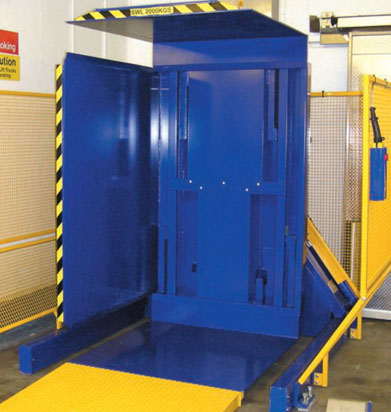
A Practical Guide to Your ROI Calculation
Let's make this very practical. You can do this calculation yourself using figures from your own operation. It is a simple, three-step process to estimate your potential savings, followed by the final ROI calculation.
Step 1: Calculate Annual Labor Savings
This is the most direct saving. Look at how many workers are currently tied up in manual pallet handling and for how long.
- Formula:
(Number of Workers) x (Hourly Wage in INR) x (Hours Spent per Day) x (Working Days per Year) - Example: Let's say 2 workers spend 3 hours a day on this task, at a wage of ₹250/hour, for 300 days a year.
- Calculation:
2 workers x ₹250 x 3 hours x 300 days = ₹450,000in annual labor savings.
Step 2: Quantify Annual Product Savings
Estimate the value of goods lost to damage during manual transfers. Even a small percentage adds up quickly in a high-volume plant.
- Formula:
(Average Value per Pallet) x (Damage Reduction Percentage) x (Pallets Handled per Day) x (Working Days per Year) - Example: If your average pallet is worth ₹60,000 and you can reduce damage by just 0.5% while handling 50 pallets a day.
- Calculation:
₹60,000 x 0.005 x 50 pallets x 300 days = ₹4,500,000in annual product savings.
Step 3: Factor in Annual Pallet Cost Savings
This applies if you switch from expensive in-house pallets to cheaper one-way pallets for shipping.
- Formula:
(Cost of In-house Pallet - Cost of Shipping Pallet) x (Number of Pallets Shipped per Year) - Example: If your reusable pallet costs ₹1500 and a one-way pallet costs ₹600, and you ship 20 pallets a day.
- Calculation:
(₹1500 - ₹600) x (20 pallets x 300 days) = ₹5,400,000in annual pallet savings.
Now, let's put it all together in a simple table to see the payback.
| Cost/Saving Factor | Formula | Example Calculation (INR) |
|---|---|---|
| Total Annual Savings | (Labor + Product + Pallet Savings) | ₹450,000 + ₹4,500,000 + ₹5,400,000 = ₹10,350,000 |
| Machine Investment | (Upfront Cost of Pallet Inverter) | e.g., ₹4,500,000 |
| Payback Period | (Machine Investment / Total Annual Savings) | ₹4,500,000 / ₹10,350,000 = 0.43 years |
In this realistic scenario, the pallet inverter pays for itself in just over 5 months. This is the kind of hard data that justifies an investment.
Why is choosing a partner more important than just buying a machine?
When you decide to invest, the natural first step is to look for suppliers. You get technical specifications, you compare features, and you get quotes. It's very easy to fall into the trap of choosing the lowest price. But I must share something I learned the hard way on my own journey from engineer to factory owner: the cheapest machine can often become your most expensive problem. A machine breaks down, the production line stops, you can't get a spare part, and the supplier who gave you that great price is now nowhere to be found. In that moment, your "savings" are meaningless.
Choosing a partner is more important than just buying a machine because a true partner provides comprehensive support that ensures the long-term value of your investment. This partnership goes beyond the initial sale. It includes expert advice on the correct machine for your specific needs, professional installation and training, and most importantly, reliable and responsive after-sales service and spare parts availability. You are not just buying a piece of equipment; you are investing in operational uptime and the peace of mind that comes with it.
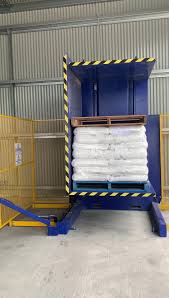
My Insight: The True Cost of a Machine
I built SHJLPACK on a foundation of gratitude and a desire to share what I've learned. My success came from the packaging industry, and now I want to help others succeed. A core part of that is sharing this crucial lesson on partnership.
Early in my career, when I was first starting my own factory, I needed a critical component for a wrapping machine. I found a supplier who offered a price that was 20% lower than anyone else. I felt smart; I thought I was saving money. The component was installed, and it worked for three months. Then, it failed during our busiest season, right in the middle of a huge order for a major client. The entire line stopped. I called the supplier. The phone number was disconnected. I sent emails. No reply. I lost that big order, and the damage to my reputation almost put me out of business. That day I made a promise to myself: I would never, ever put one of my clients in that position. That experience is the reason SHJLPACK's slogan is "TOTAL SOLUTION FOR WRAPPING MACHINE." The solution includes the long-term support.
When you are looking for a pallet inverter for your plant in India, you need a partner who understands your context. They will ask about your power supply stability, the high humidity in certain seasons, and the skill level of your operators. Based on this, they will recommend the right model—perhaps a stainless steel version for food-grade environments, a freestanding model for flexibility, or a floor-level unit for easy pallet truck access. This is advice that a simple price list cannot give you.
The real value of a partner becomes clear months and years after the purchase. What happens when a sensor fails or a hydraulic hose needs replacement? A true partner has a local service presence or a system to get you spare parts quickly. They provide clear documentation and can offer technical support over the phone to get you running again in hours, not days. This is the difference between a machine being a productive asset for 15 years and a liability after 15 months. This is the partnership that helps you grow.
Conclusion
In summary, pallet inverters are a powerful, cost-effective tool for Indian FMCG plants. They boost efficiency and safety, delivering a rapid return on investment and a significant competitive advantage.




